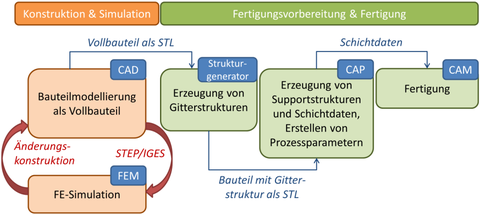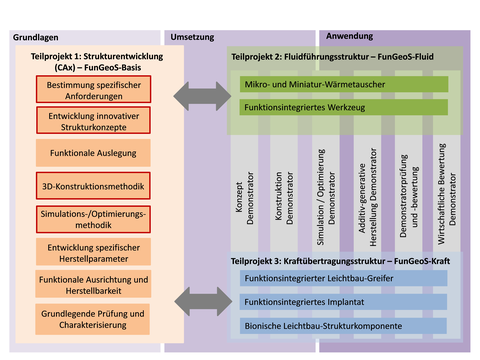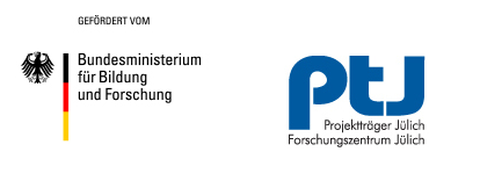Structural development (CAx)
| Runtime | 01.09.2016 – 28.03.2019 |
| Overall project | Funktionale Geometriestrukturen (FunGeoS) für generative Fertigungsverfahren |
| Funding | BMBF |
| Project lead | Dr.-Ing. habil. Christine Schöne (former staff member) |
| Project staff | |
| Dr.-Ing. Matthias Klaus (former staff member) | |
| Partners | Citim GmbH |
| S.K.M. Informatik GmbH | |
| Fraunhofer Institut für Fertigungstechnik u. Angewandte Materialforschung | |
| Fraunhofer Institut für Keramische Technologien und Systeme | |
| Fraunhofer Institut für Werkstoff- und Strahltechnik | |
| Fraunhofer-Institut für Werkzeugmaschinen und Umformtechnik | |
| Laserinstitut Hochschule Mittweida | |
| 3D Microprint GmbH | |
| CIM-TTS GmbH Wismar | |
| FKT Formenbau und Kunstsofftechnik GmbH | |
| Institut für Luft- und Kältetechnik, gemeinnützige GmbH | |
| Volkswagen AG | |
| Robert Bosch GmbH | |
| LASERVORM GmbH | |
| Mathys Orthopädie GmbH | |
| SITEC Industrietechnologie GmbH |
Motivation
The aim is to establish a process chain for the design development process that will allow designers in their environment to create and calculate functional geometric structures and modify them in turn. The focus is on load-bearing and fluid-carrying structures that are to be produced using generative processes. Reference will be made to established design programs and simulation tools with the known interfaces in the CAx environment.

Current state of the art in structure generation
Objective
For tool and mould making, it is particularly important to supplement the hybrid design of conventionally manufactured base bodies with additive-generatively manufactured inserts that are equipped with structures for cooling close to the contour. The aim is to increase the service life of the tools. For this purpose, software tools for the automated determination of the parting line and for the effective design of cooling channels are to be designed and implemented in the CAD environment. In the future, these must already be taken into account in the design (CAD) and simulation (CAE) environment in order to be able to design and lay out components in a way that is just right for the load. In addition to regular lattice structures for technical components (gripper demonstrator) where a volume and weight minimisation of 50% is favoured, graded structures are to be developed in order to obtain an individual (patient-specific) adjustment of the stiffness for medical products (implant demonstrator in this case). In order to achieve the above-mentioned goals, suitable software tools must be designed, implemented and tested. Since these software tools have not yet been established for CAD, CAE and CAP (work planning), they are now to be developed and implemented for the entire product development and manufacturing process and form the overall objective of the sub-project.



